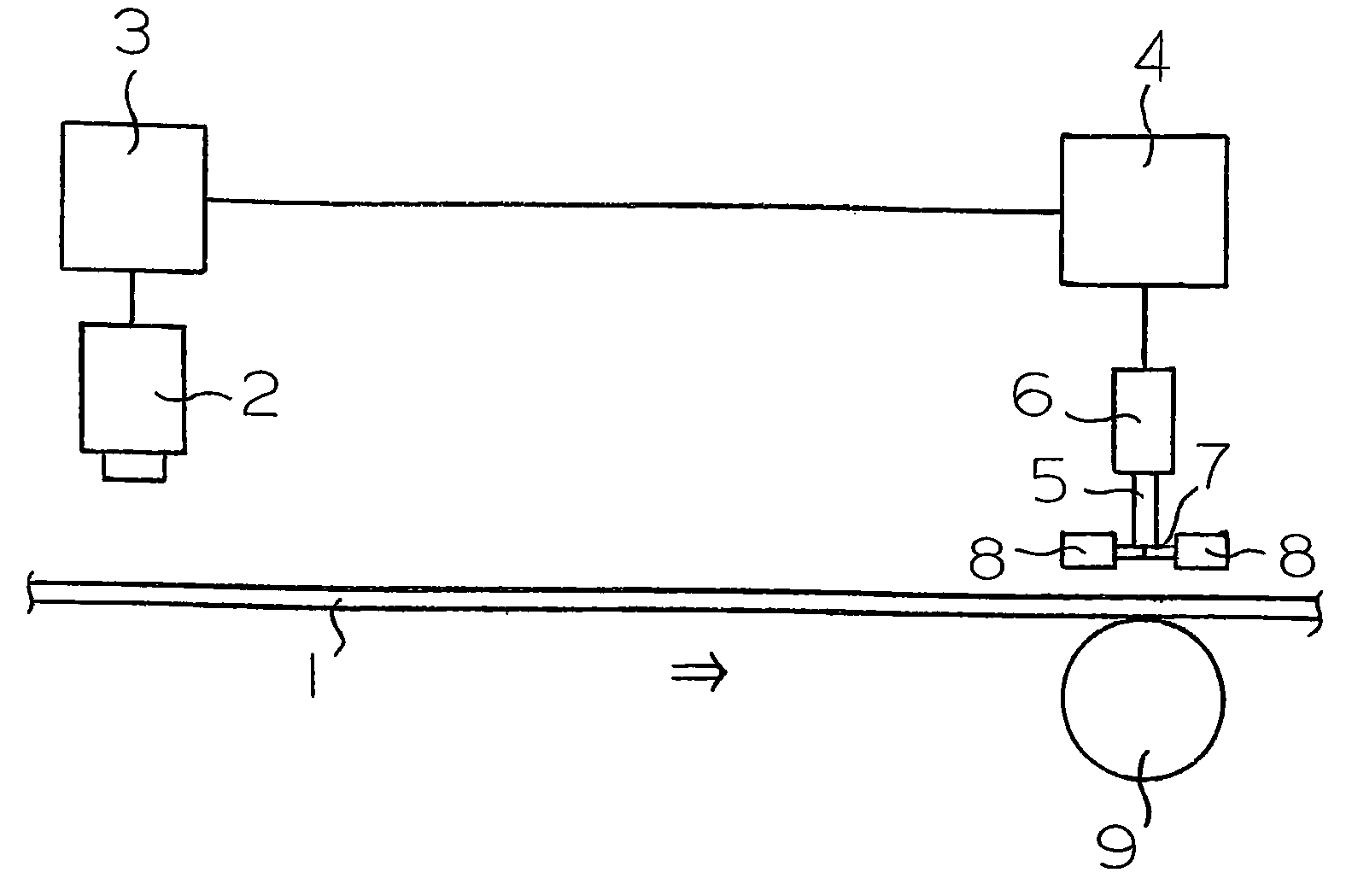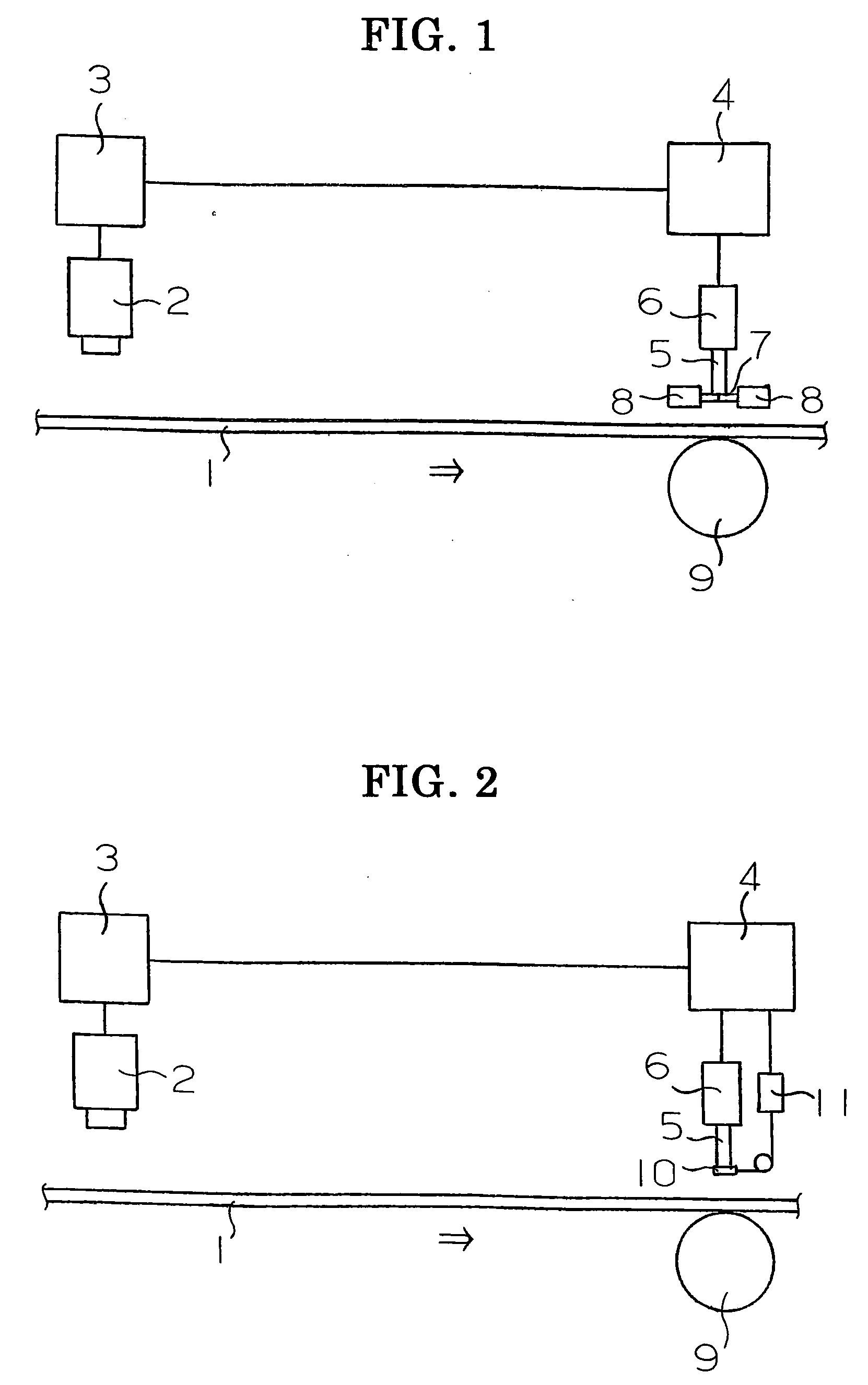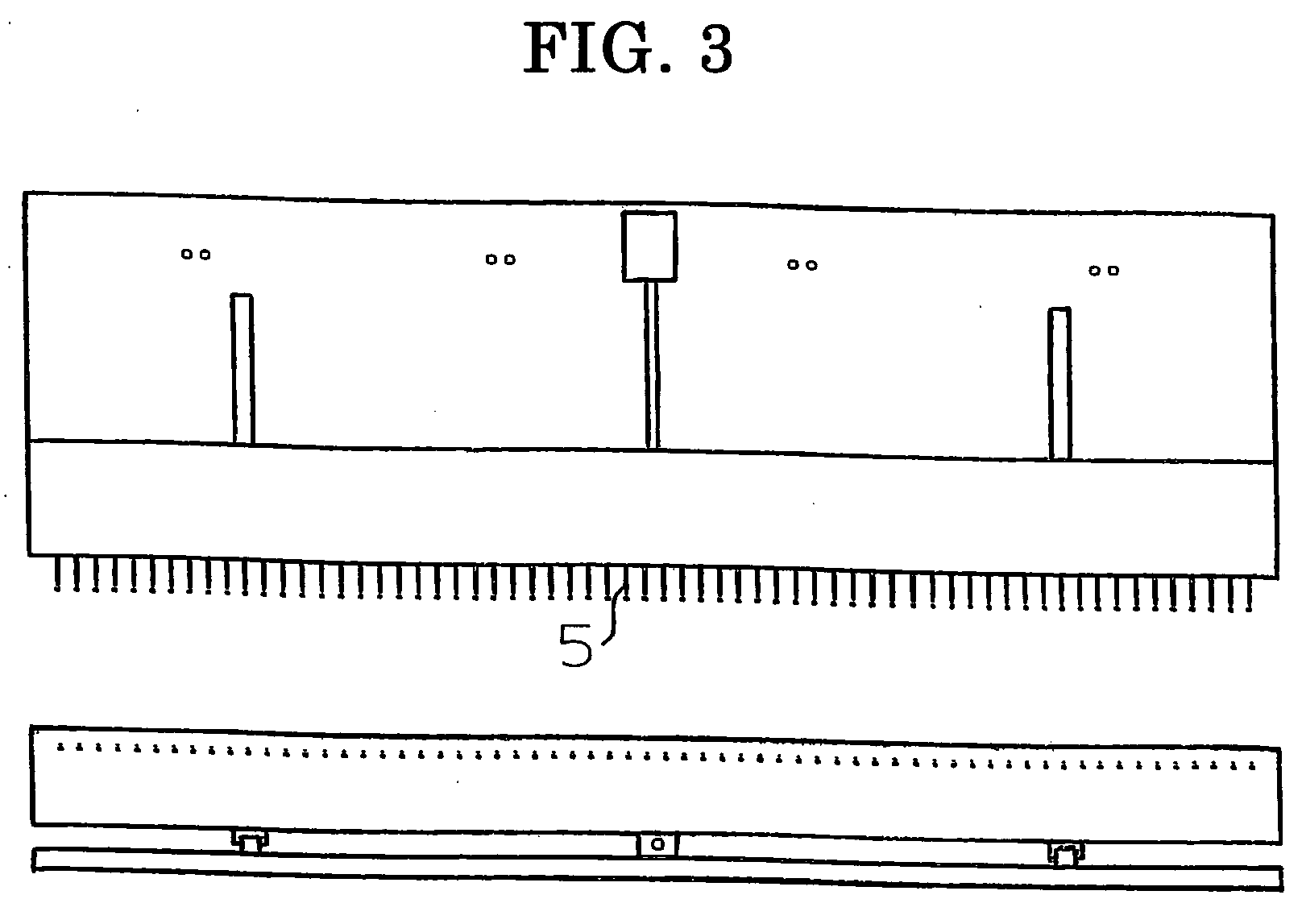Apparatus for marking a defect
a technology for defect marking and apparatus, applied in the field of apparatus for defect marking, can solve the problems of reducing the strength of the portion having the physical mark, difficult marking, and clogging of the head, and achieve the effect of efficient placement, easy recognition, and efficient operation
- Summary
- Abstract
- Description
- Claims
- Application Information
AI Technical Summary
Benefits of technology
Problems solved by technology
Method used
Image
Examples
example 1
[0238] A biaxially stretched polyethylene terephthalate film having a width of 1,600 mm and a thickness of 50 μm was inspected. Above the polyethylene terephthalate film, 8 CCD cameras were disposed at a distance of 200 mm between each other. Below the polyethylene terephthalate film, light sources were disposed at positions corresponding to the positions of the CCD cameras. Above the polyethylene terephthalate film, a marking head having 64 pairs of a container tube for an oil-based marking pen worked by a solenoid and a shutter of the container tube worked by an air cylinder which were arranged along the line having the length of the width of 1,600 mm at a distance of 25 mm between each other was disposed at a position downstream of the CCD cameras and the light sources by 2.0 m. Below the polyethylene terephthalate film, a supporting roll was disposed at a position facing the marking head.
[0239] As the solvent for the oil-based marking pen, a mixed solvent containing 70% by weig...
example 2
[0241] A biaxially stretched polyethylene terephthalate film having a width of 1,400 mm and a thickness of 100 μm was inspected. Above the polyethylene terephthalate film, 8 CCD cameras were disposed at a distance of 200 mm between each other. Below the polyethylene terephthalate film, light sources were disposed at positions corresponding to the positions of the CCD cameras. Above the polyethylene terephthalate film, a marking head having 70 pairs of a container tube for an oil-based marking pen worked by a solenoid and a shutter of the container tube worked by an air cylinder which were arranged along the line having the length of the width of 1,400 mm at a distance of 20 mm between each other was disposed at a position downstream of the CCD cameras and the light sources by 2.0 m. Below the polyethylene terephthalate film, a supporting roll was disposed at a position facing the marking head.
[0242] As the solvent for the oil-based marking pen, ethanol was used. The tip of the pen ...
example b1
[0245] A polycarbonate material film for a carrier tape for mounting electronic parts having a width of 1,200 mm and a thickness of 0.2 mm was slit to form 60 product films having a width of 20 mm. Above the film, 6 CCD cameras were disposed at a distance of 200 mm between each other. Below the film, light sources were disposed at positions corresponding to the positions of the CCD cameras. Above the film, a marking head having 60 pairs of a container tube for an oil-based marking pen worked by a solenoid and a shutter of the container tube worked by an air cylinder which were arranged along the line having the length of the width of 1,200 mm at a distance of 20 mm between each other was disposed at a position downstream of the CCD cameras and the light sources by 2.0 m. Below the polyethylene terephthalate film, a supporting roll was disposed at a position upstream of the marking apparatus by 5 mm. An inspection apparatus for detecting a defect by processing images taken by the CCD...
PUM
 Login to View More
Login to View More Abstract
Description
Claims
Application Information
 Login to View More
Login to View More - R&D
- Intellectual Property
- Life Sciences
- Materials
- Tech Scout
- Unparalleled Data Quality
- Higher Quality Content
- 60% Fewer Hallucinations
Browse by: Latest US Patents, China's latest patents, Technical Efficacy Thesaurus, Application Domain, Technology Topic, Popular Technical Reports.
© 2025 PatSnap. All rights reserved.Legal|Privacy policy|Modern Slavery Act Transparency Statement|Sitemap|About US| Contact US: help@patsnap.com



